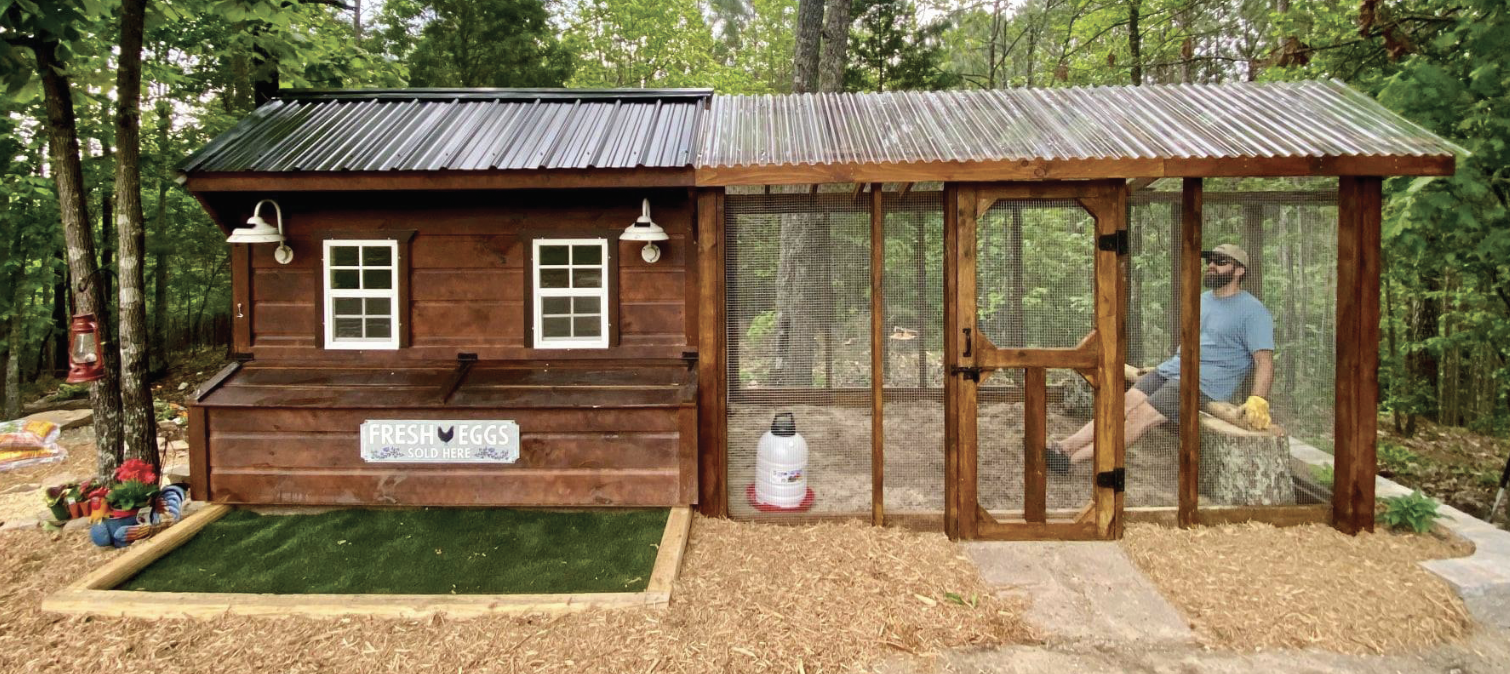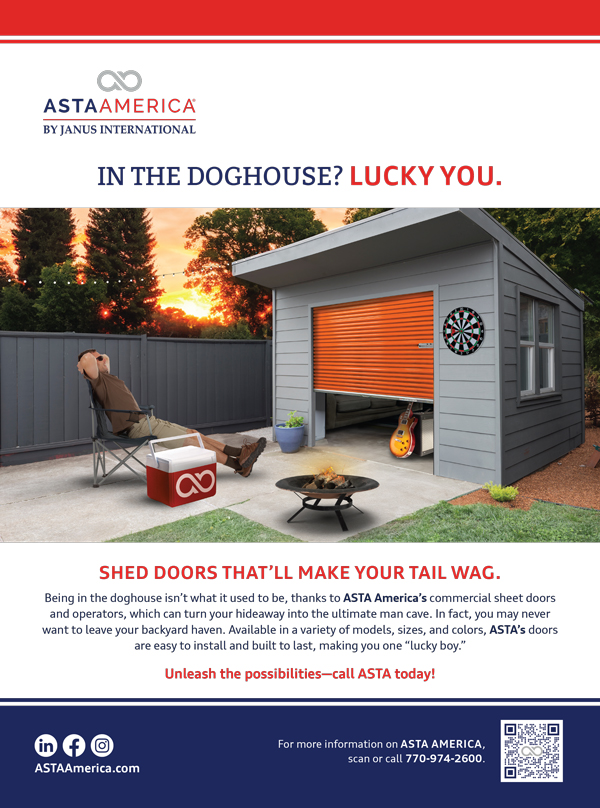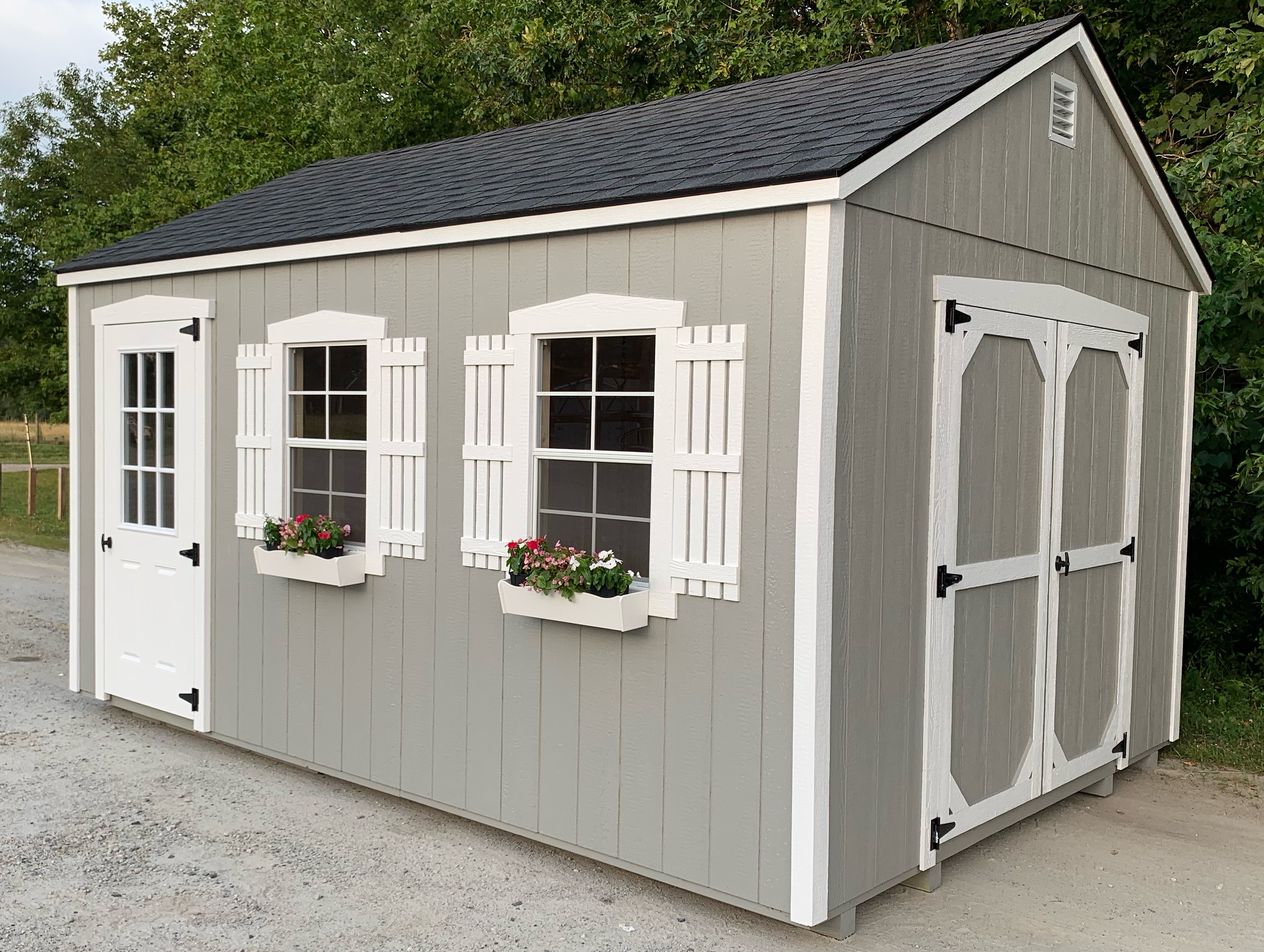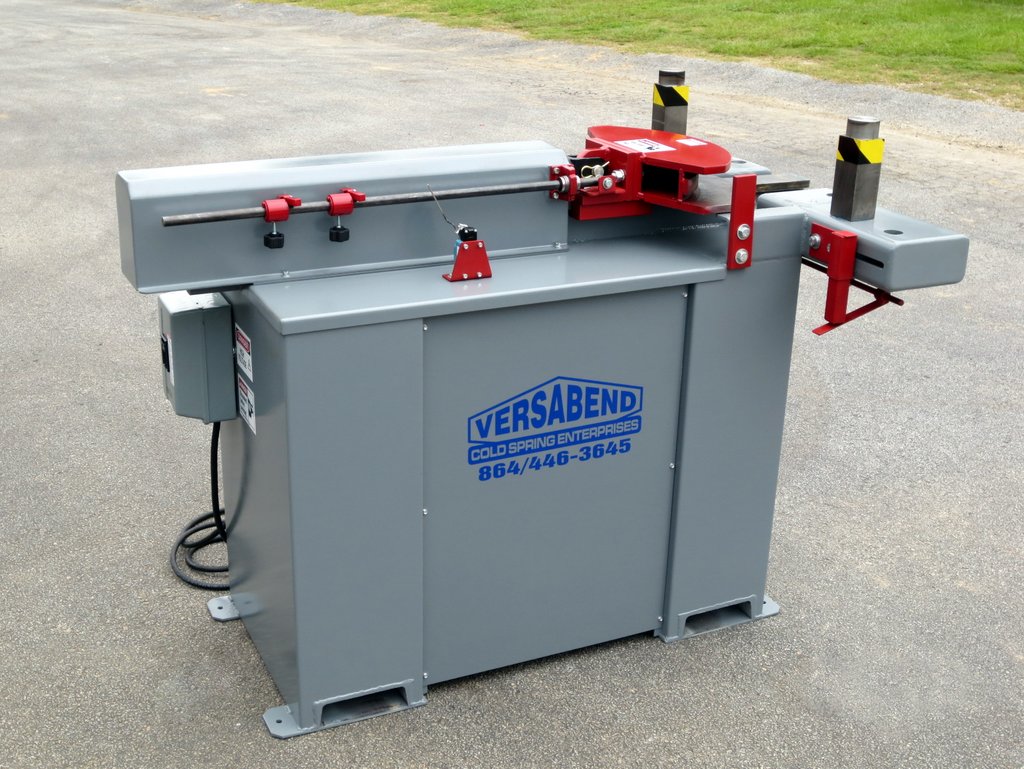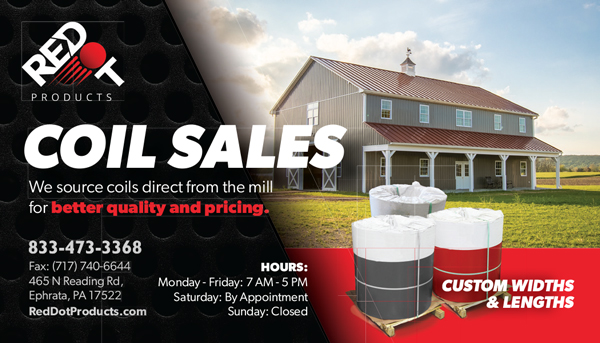There are many reasons why a person might consider adding a chicken coop to their backyard. Perhaps the most inspiring is the most obvious — when eggs skyrocket in price, like they did in 2022, mostly because of the worst case of avian flu in U.S. history.
There’s also a general “back to nature” movement afoot that might have some practical roots but is also trendy. The president of the American Poultry Association recently confirmed the trend to NPR, saying backyard poultry has been on an upswing for five to 10 years, in part because “it’s become a lot more fashionable to do it.”
The challenge and opportunity for builders and contractors is that a lot of people have a lot of ideas, but they don’t always know how to execute them. That’s where their builder or contractor comes in. Here’s how to help somebody when they ask, “Do you know how to build a chicken coop?”
Job #1: Keeping Out Predators
There are a few keys to raising chickens, including light control, ventilation, and the expected challenges with cleanliness, but the #1 challenge that most people do not consider is predators. If you don’t take this into account, you won’t be feeding eggs to your family, you’ll be feeding chickens to your local raccoons and foxes.
“The most important thing about keeping chickens is predator protection, so keep things like racoons, foxes, hawks, owls, rats and even skunks in mind and can your design keep them out no matter how persistent the predators are,” said Buddy Pullen, regional sales manager for AmeriLux, which sells products for chicken coops including the panels that can be used for walls and roofs.
The Oregon State University Extension Service created a great list of tips for keeping your chickens safe in its “Backyard Chicken Coop Design” document, created as part of its “Living on the Land” series. It offered some practical advice, including:
• Design a coop that closes the flock inside at night. Relatedly, enclose the coop with 1” by 2” mesh fencing, and make sure to fence it over the top.
• Raise the coop at least 1 foot off the ground. Rats, snakes, raccoons, and skunks won’t like that.
• Secure the flooring with a concrete slab, solid wood, or similar (not gravel or dirt that a critter can dig through).
• Bury fencing at least 6″ into the ground, because coyotes, foxes, dogs, and rodents are not afraid to dig.
• Add a motion-detector light.
• Do not place large plants near the coop. Predators can use them to hide while considering their options.
• Consider building it as close to the house as you’re willing. Some predators won’t like that proximity.
Planning for the Floor
Will Hunter of MW Hunter Custom Woodworking is an expert in building chicken coops. He uses products from Onduline, which produces Ondura Premium Series panels and color-matching ridge caps and fasteners. He points out that you want to start with a “level, dry location on your property. This will save you time in setup and maintenance in the future.”
Next comes the floor, which most experts stress should be solid, both for the reasons noted above related to predation but also for ease of cleaning. “They will want to consider how they will retrieve eggs daily and how they plan to clean the floor and nesting boxes,” Pullen said. “Good design can make these much easier or harder depending on the thought that goes into the planning. Placing HDPE (High Density Polyethylene) in the floor will protect the wood subfloor from damages caused by waste and moisture.”
HDPE sheets from companies including AmeriLux come in thick versions for such uses. If you can’t picture it, think of a cutting board.
The coop should be cleaned weekly. Have the doors open to the outside because it makes cleaning easier, and slope the floor so you can simply hose out the coop.
Raising Up the Roosts
You’ll need to use roosting poles, typically made of wood because that is easy for chickens to climb on, and somewhere below those, you’ll build nesting boxes. The poles can be painted for ease of cleaning, but they should be made of wood or something that allows for climbing, not a slippery substance like plastic, and not so small that the chickens can’t grab it, meaning at least 1 to 2 inches wide.
The boxes themselves should be about a foot wide and tall, or you can use
5-gallon buckets.
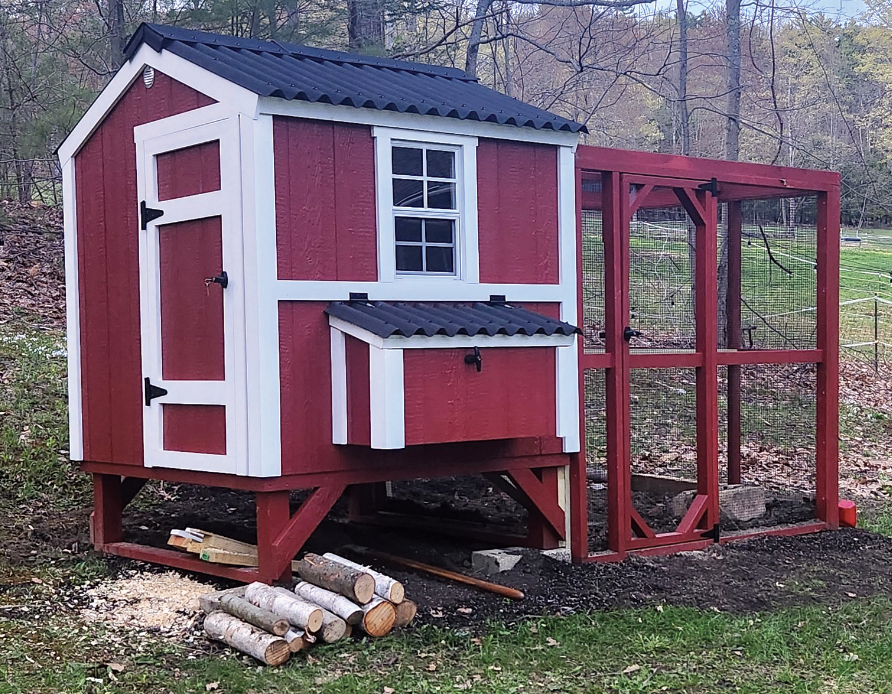
Always remember that the roosting poles should be higher than the nesting boxes. The chickens are going to sleep as high as they can, so put the roosting poles at the top. Yes, they’ll be defecating on the top side of the nesting boxes/pails, but the alternative is that they’ll sleep in their nesting box and defecate in there.
For the same reason, either angle the top of the nesting boxes, or use pails so they aren’t inclined to sleep on top of them and rather sleep on the roosting poles.
Doing the Math
Hunter said one of the things that newbies in chicken coops often get wrong is the size, and they can err in both directions — too big or too small.
Typical math is one box or bucket per four birds. More numbers: About 3 square feet of coop space per bird.
Hunter said to plan for a coop size that leaves room for the future, not just the current flock, but don’t simply build an overly big coop in case of growth if you’re not sure you’ll need the space. You don’t want to be powering unnecessary heat and ventilation or having to clean more space than necessary.
More typically, though, the homeowner builds too small, often forgetting that if or when you add birds, you’re typically offered batches of four or more. “So, the next batch will be the same, four, and 4+4=8,” and suddenly your coop is undersized, he said.
Raising Chickens for Meat
Most people are only interested in the eggs. If you have a client who wants to eat chickens, and therefore create not only eggs but also more chickens, they need to plan for that.
First, it’s not as obvious as it seems, so we’ll literally give the “birds and bees” talk as it relates to chickens. Hens will create eggs without a rooster, but that egg can’t turn into a chicken without the rooster. For more detail, use the Internet as this is a family magazine.
So do you need a rooster? No, you don’t need a rooster if you’re only creating eggs; in fact, you don’t want one — they only cause problems, including their crowing noise. If you want to raise chickens for meat, and therefore you want to breed them to re-create the cycle, that requires additional planning and a second coop for the roosters. You don’t want the roosters able to reach the chickens, or you’ll have chaos of many kinds. Remember that some colleges still don’t have coed dorms.
If somebody wants to raise chickens for their meat, they will also want to learn what chickens should eat, in the vein of “you are what you eat,” similar to grass-fed cattle. There are articles about that topic online.
Planning the Roof: Ventilation and Daylight
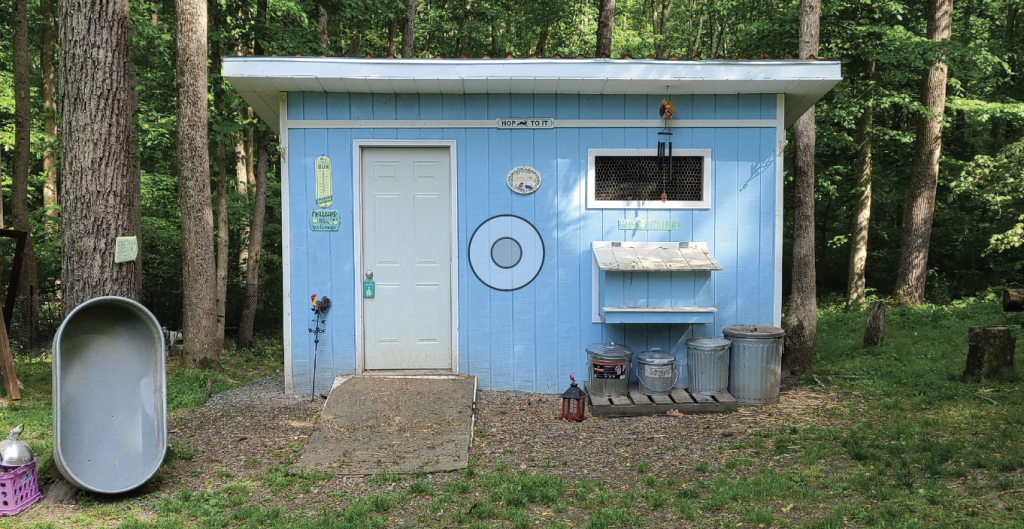
Ventilation can be active or passive. You rarely need active (powered fans) except in very hot climates. If you use fans, do not point them directly where the chickens will roost. Pullen advised that while predation control is key, you shouldn’t design the coop so securely that the ventilation is restricted. Closing off the predators’ vision can be helpful but not at the expense of ventilation.
Daylight increases a bird’s laying capacity, so commercial growers use a combination of clear and softlite polycarbonate on side walls. “Clear on the inside and softlite on the outside,” Pullen said. “This combination will allow about 85% light transmission but doesn’t allow the birds a clear view of the ‘outside world,’ which keeps them calmer, leading to better production. This application lends itself well to tunnel ventilation, supplying plenty of fresh air.”
One of the themes that you hear from chicken coop experts is that the chickens need to be comfortable in order to produce eggs on a regular basis, and that includes having natural light. So the best coops have a roof that allows for light, like a Palram SUNTUF® corrugated polycarbonate panel. Learn more about daylighting and polycarbonate panels in the May 2023 issue of Rural Builder magazine (download it and subscribe free at ruralbuildermagazine.com). You’ll want to learn how to install polycarbonate, if you’re not experienced in that already.
One chicken coop expert on the website thegardencoop.com said which tint of SUNTUF® to use depends on the environment and placement. They like the look of the Solar Gray tint, but said to consider White if the coop is in the sun all day, and only use Clear if the coop is in the shade most of the day.
Cold Climates: Heat and Light
You are more likely to need power in colder climates. In areas that often dip below 40 degrees F, you’ll want to plan for both heat and light. Hens create eggs on pace with their energy and comfort level, and also in conjunction with light levels, so in darker seasons, you’ll want to influence their laying schedule with artificial light. Chickens can survive in the cold, but in a near-freezing coop, their energy will go toward survival and not eggs, so you’re going to want power to keep the coop at 40 degrees F or higher. You also don’t want their water freezing.
Quality Materials
A newbie who is merely trying to create cheaper eggs might have cost reservations about building this the “right way” and might instead be inclined to build cheaply. After all, if they’re simply after inexpensive eggs, a large investment in a chicken coop might defeat the purpose.
But plywood and gravel do not make for a good chicken coop and your customer is likely to regret it if they’re truly invested in this idea and they skimp on the materials. Hunter stressed that you should emphasize durability and endurance of the products used. “Selecting the correct parts now will save you time and work later,” he said. For him, that means Onduline’s Ondura Premium Series. He said that product is perfect for chicken coops because of the noise- and heat-reduction capabilities, and the lightweight and waterproof materials help keep the coop cooler on sunny days and quieter during storms, which matters to hens.
Hunter also strongly suggests that people not simply buy a chicken coop kit and build it themselves, which as a builder you can use in your marketing. Hunter advised that you help your customers “choose quality versus a box kit from a store. Building your own chicken coop allows you to customize it and make it your own. This will always be a better coop.”
Leo Vildosola manages U.S. and Canada sales for Klar, which produces PVC ribbed corrugated panels. He also strongly recommended that as the builder, you suggest to your buyer that they choose quality materials, and for literally meaty reasons, not just for your marketing.
Wood will rot and metal will rust, so upgrading to PVC is something your buyer should consider. PVC is more expensive than wood or metal, but something like Klar’s “Thermo-acoustic” Rigid PVC panels should at least be price-checked given its lifespan versus wood or metal and its noise and insulation properties. “They are great for chicken housing because they are great thermo-insulators to protect the chicken from temperature (high and low), as well as being a noise absorption material as supposed to metal sheets that are not only a poor insulator for temperature, but also the noise bounces around instead of being absorbed,” Vildosola said.
In other words, it’s not just because the coop will be more maintenance-free in the future, but it’s also because even the chickens care. “First of all, it is important to know what kind of chicken you are farming (meat chicken, egg layer, etc.),” Vildosola said. “But in all cases, factors like noise and temperature affect chicken growth and health (high stress of the animals), so the R-value and insulation properties of PVC panels will help keeping a stable environment for your chicken which means more growth and less stress to lay more eggs per year.” GSCB


